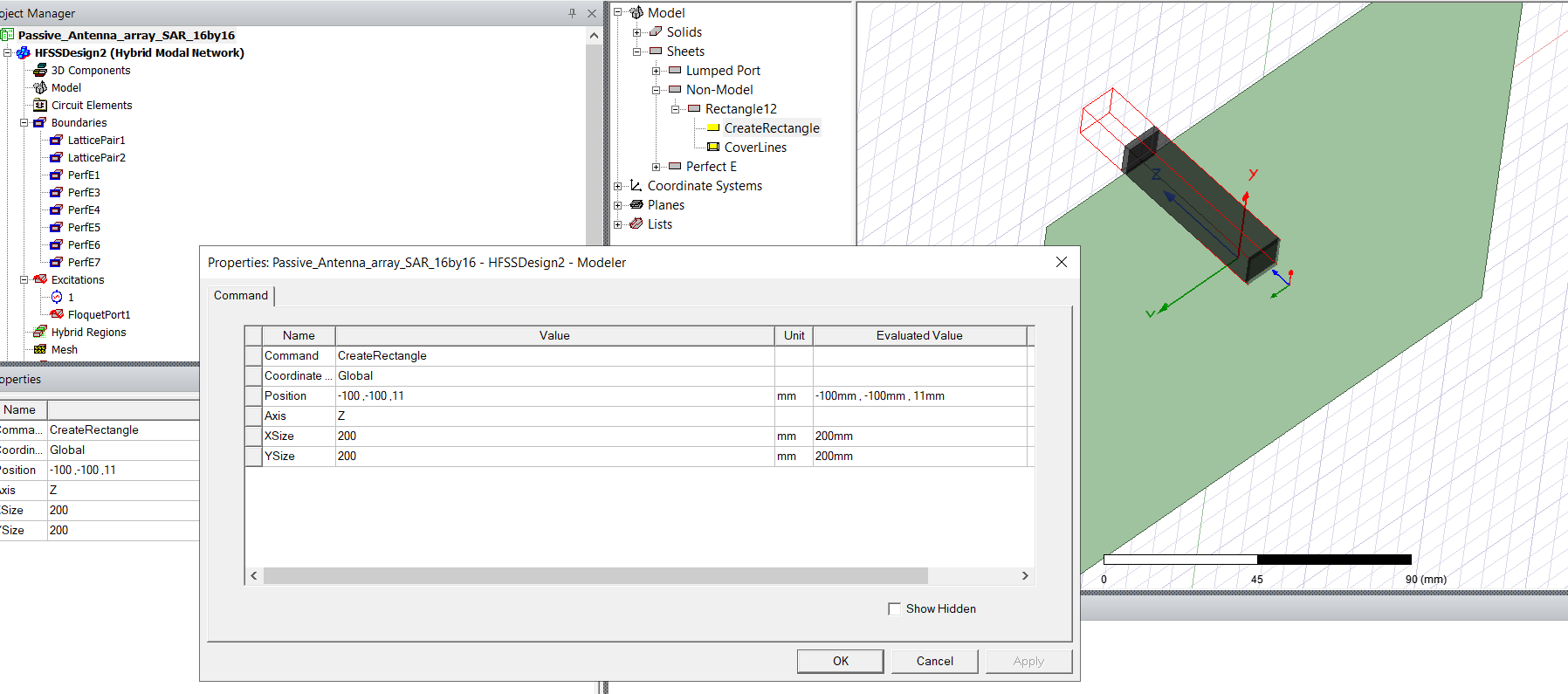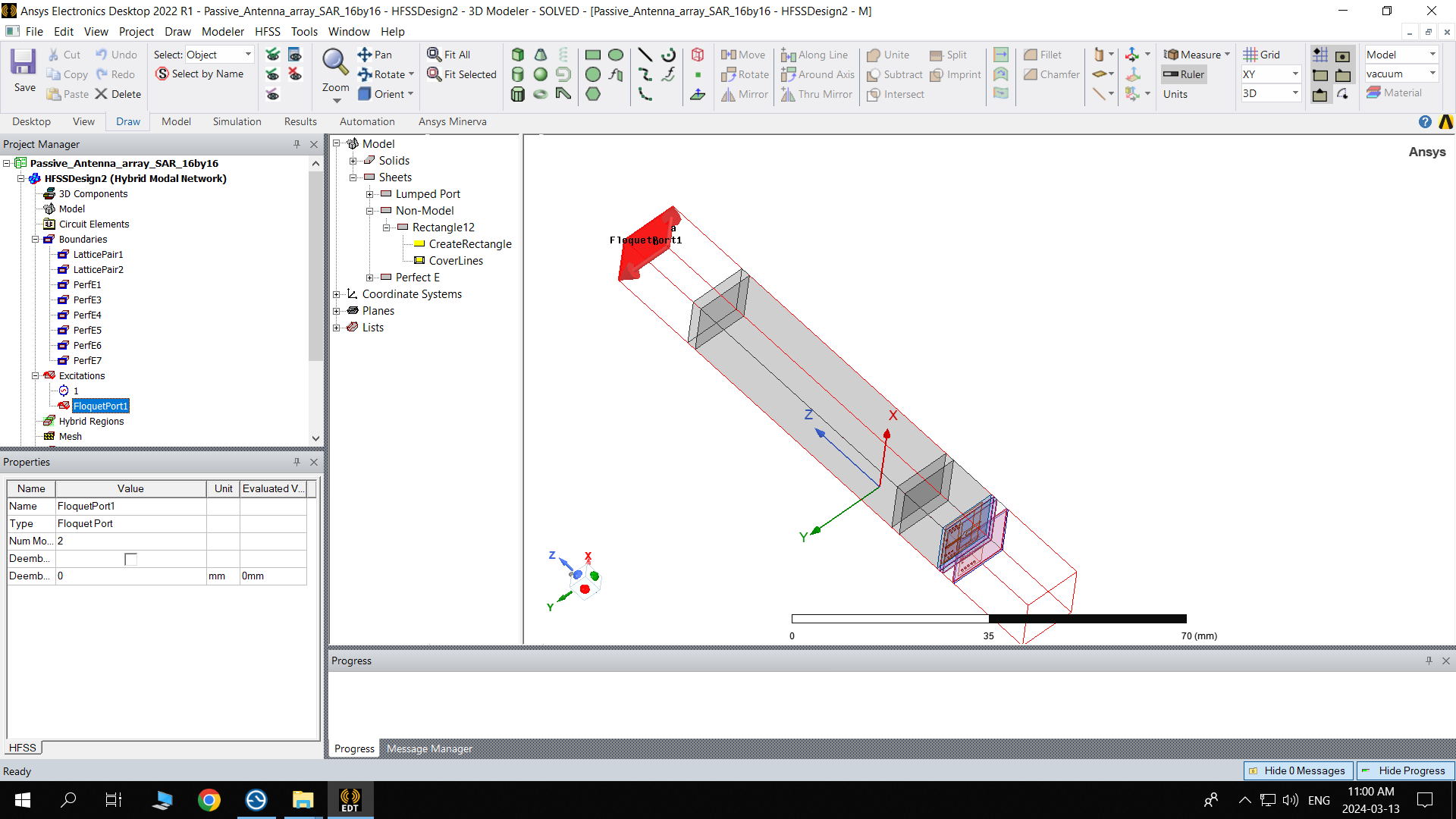-
-
March 11, 2024 at 5:16 pm
Nooshin Valizade Shahmirzadi
SubscriberHello,
I want to plot the near E-filed distribution of an 16by16 antenna array. If I want to define the array as an explicit array or finite array, it needs enormous RAM and I always get an "Out of RAM error". I decided to realize this array by defining a unit cell and then introducing floquet excitation. After the simulation was done, I defined a non-model plane which encompassed 16 by 16 antenna elements in the near field of my antenna array. However, the plotted E-field corresponds to one unit cell not the 16 by 16 antenna array. What should I do regarding this issue?
Your help is highly appreciated!
Kind regards,
Nooshin
-
March 13, 2024 at 1:15 pm
dushyant.marathe
Ansys EmployeeHi Nooshin,
Thanks for posting your query over the forum. If you can share a screenshot, I would like to see the non-model plane and setup you defined to check near E field in your model.
Thanks,
-
March 13, 2024 at 3:08 pm
Nooshin Valizade Shahmirzadi
SubscriberHello,
Thank you for your reply. My antenna array is in direct contact with compressed breast tissue, so I defined different layers above my antenna unit cell (absorber-10mm, skin-2mm, heterogenous medium (category D)-52 mm, skin-2mm) which emulate my phantom properties. I defined a 200 mm by 200 mm non-model plane in the middle of the first skin layer. You can see it below:
You can also appreciate how I defined boundaries and excitation in my unit cell from the top screenshot.
You can see the antenna itself in the following figures and the floquet port which is defined on radiating surface.
The E-filed distribution is also provided.
I wanted to attach my HFSS file to this discussion, but it’s not allowed.
Kind regards,
Nooshin
-
March 19, 2024 at 2:02 pm
dushyant.marathe
Ansys EmployeeHi Nooshin,
Thanks for sharing more details about your project setup.
As I understand, you have a unit cell with periodic boundary conditions which has antenna and skin tissues. In infinite array case, a unit cell is solved, and mathematical equations are used to in principle of pattern multiplications. In my opinion, if you define a non-model plane encompassing the size of 16 x 16 elements to probe a field quantity, you should see the field on the portion of non-model plane intersecting with unit cell box, i.e. of only one unit cell.
The approach to view fields of 16 x 16 elements array will be creating explicit array where you create an explicit array of 16 x 16 elements. This may be computationally demanding.
There is one more approach where you create a unit cell with periodic boundary conditions and create a 3D component of it. You can use an approach of creating an array based of 3D components. You can find more information about this in HFSS help PDF and look for “Create Array Command for 3D Component”. This approach of creating the array saves to some extent simulation time and have a reasonable computing resource. You can also see the near E field by using Near field setups. Furthermore, in 2023R2 there is a beta feature “HFSS component array with Surrounding Geometries”. Using this feature, you can add arbitrary native FEM geometries around the 3D component array, if all geometries are enclosed by an airbox and in your case tissues. However, when you go for surrounding geometries the computational resources becomes more and they are furthermore if you involve complex skin tissue and go for computationally demanding SAR calculations.
Thanks,
-
- The topic ‘How to plot the E-field distribution of an Infinite antenna array’ is closed to new replies.


- Three-Phase Voltage Imbalances in dual stator electric generator
- Link the Circuit to 3D Terminals
- Magnetic Dipole moment calculation
- Integration lines or U Axis Line for circular and rectangular ports
- Core Loss in ANSYS MAXWELL Eddy Current solution
- exporting and importing my Netlist for my external circuit
- Error of Metal Fraction in Icepak Classic.
- The unit of theta in Is*sin(2*pi*fre*Time+theta-2*pi/3)
- 2D transient simulation -torque issue
- Two way coupling for Maxwell and thermal problem

-
4613
-
1520
-
1386
-
1209
-
1021

© 2025 Copyright ANSYS, Inc. All rights reserved.










